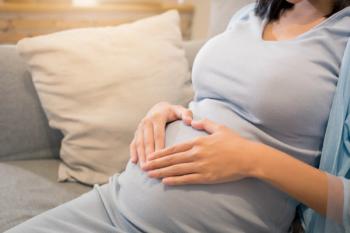
Infant Death More Likely When Both Mom and Baby Admitted to ICU
Compared with newborns who require NICU admission but have a healthy mother, mother-infant pairs who both are admitted to an ICU after delivery have a higher risk of death, according to the results of a new study.
Compared with newborns who require NICU admission but have a healthy mother, mothers who require ICU admission but have a healthy newborn, and mother-infant pairs who are healthy, mother-infant pairs who both are admitted to an ICU after delivery have the highest risk of death, according to the results of a new study.1
In a population-based study examining more than 1 million singleton live births, researchers evaluated the prevalence and predictors of mother-infant separation and mortality associated with co-ICU admissions to better understand how family discord and stress affects outcomes. Overall, 1216 mother-infant pairs had co-ICU admission, 897 mothers had ICU admission, 123,236 infants had NICU admission, and 898,629 mother-infant pairs had no ICU admission. The primary outcome was mother-infant separation because of interfacility transfer.
The study authors found that infant mortality was 28 times higher and maternal mortality was 330 times higher for mother-infant pairs with co-ICU admission than for mother-infant pairs with no ICU admission.1 In addition, mother-infant pairs with co-ICU admission were 31 times more likely than mother-infant pairs with no ICU admission to be separated soon after birth because either the mother or the infant or both required transfer to another hospital.
Interestingly, both mothers and infants in the co-ICU group were more likely to die than their NICU only and maternal ICU only comparators. Short-term infant mortality, defined as death less than 28 days after birth, was 18.1 per 1000 live births in the group with co-ICU admission and 7.6 per 1000 live births in the NICU admission only group. Short-term maternal morbidity, defined as death less than 42 days after delivery, was 15.6 per 1000 in the co-ICU group and 6.7 per 1000 in the maternal ICU admission only group. These results suggest that when the mother is physically absent from her newborn, there are serious long-term implications for mother-child bonding if the mother is unable to care for and bond with her baby, write the study authors.
One explanation offered by the study authors for this higher risk of death in mother-infant pairs with co-ICU admission is that “abnormalities of the maternal and fetal placental circulations may often co-exist, and a diseased placenta may adversely affect mother and fetus alike. Placental dysfunction may result in preeclampsia, placental abruption and placental infarction, paralleled by an increased rate of preterm cesarean delivery and involvement of the maternal hepatic, cardiac, renal and cerebral systems.”
Pertinent Points:
- The risk of death is higher in mothers and newborns who both require ICU admission than that for mothers and infants in any other comparator group (maternal ICU admission only, NICU admission only, no ICU admission).
- Transferring mothers and babies to the same hospital when possible may help ameliorate the stress of co-ICU admissions on the family as well as help facilitate maternal-newborn bonding, suggest the study authors.
References:
Ray JG, Urquia ML, Berger H, Vermeulen MJ. Maternal and neonatal separation and mortality associated with concurrent admissions to intensive care units. CMAJ. 2012;Oct 22. [Epub ahead of print]
Newsletter
Get the latest clinical updates, case studies, and expert commentary in obstetric and gynecologic care. Sign up now to stay informed.











